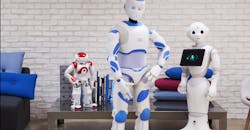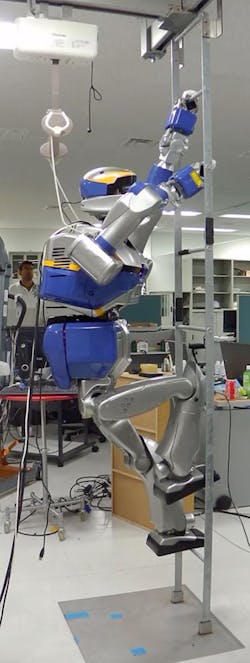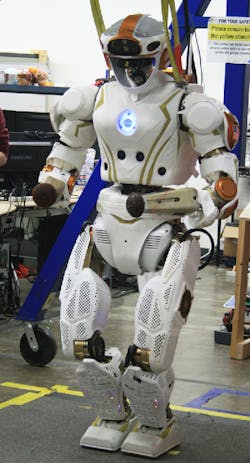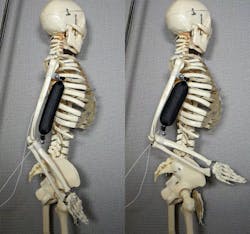What’s the Future Role for Humanoid Robots?
It has been well documented that there will be increase in the number of robots over the next decade. According to the Boston Consulting Group, by 2025, robots will perform 25% of all labor tasks. This is due to improvements in performance and reduction in costs. The United States, along with Canada, Japan, South Korea, and the United Kingdom, will be leading the way in robot adoption. The four industries leading the charge are computer and electronic products; electrical equipment and appliances; transportation equipment; and machinery. They will account for 75% of all robotic installations by 2025.
The growth of robotics will also affect the service industry. In a recent report from Berg Insight, the service robot base is expected to install 264.3 million units by 2026. In 2016, 29.6 million service robots were installed worldwide. The robots in the service industry broke down into the following groups:
- Floor cleaning robots accounted for 80% of total service robots, with 23.8 million units
- Unmanned aerial vehicles accounted for 4 million units
- Automated lawnmower units tallied 1.6 million units
- Automated guided vehicles installed 0.1 million units
- Milking robotic units tallied to 0.05 million units
The remaining segments included humanoid robots (including assistant/companion robots), telepresence robots, powered human exoskeletons, surgical robots, and autonomous mobile robots. Combined, they were estimated to have had less than 50,000 units installed.
Humanoid robots, while being one of the smallest groups of service robots in the current market, have the greatest potential to become the industrial tool of the future. Companies like Softbank Robotics have created human-looking robots to be used as medical assistants and teaching aids. Currently, humanoid robots are excelling in the medical industry, especially as companion robots.
University of Southern California Professor Maja Matarić has been pairing robots with patients since 2014. Her robots helped children with autism copy the motions of socially assistive robots and, in 2015, the robots assisted stroke recovery victims with upper extremity exercises. The patients were more responsive to the exercises when promoted and motivated by the robot.
However, companies are now using humanoid robots to fill engineering tasks. A four-year joint research project was conducted by Joint Robotics Laboratory and Airbus Group to use humanoid robotic technology in aircraft manufacturing facilities. By using humanoid robots on aircraft assembly lines, Airbus looks to relieve human operators of some of the more laborious and dangerous tasks. The human employers could then concentrate on higher value tasks. The primary difficulty is the confined spaces these robots have to work in and being able to move without colliding with the surrounding objects.
The Joint Robotics Laboratory developed the new HRP-2 and HRP-4 robot models with a new robotic movement technology known as multi-contact locomotion. By making use of its entire body to make contact with its environment, and not just its feet, this type of robot can climb ladders and enter confined spaces. The multiple points of contact on the robot help to increase a robot's stability and offers better force control when executing a task. Lastly, the anthropomorphic form of these robots offers greater flexible for operating in different environments.
NASA is using its Valkyrie robot for similar tasks, albeit on future missions to Mars. Valkyrie is a 6-2 humanoid robot weighing 300 lb. The robot’s brain is powered by two Intel Core i7 computers, and the head houses lidar sensors, cameras, and a Multisense SL camera to continually scan the surrounding objects and environments. The Multisense camera combines laser, 3D stereo, and video to sense the environment. Hazard cameras look ahead and behind from the torso to detect possible dangers.
But the real value of Valkyrie is in its hands. Professor Taskin Padir from Northeastern University and his research team have been in charge of creating human like flexibility to the robot’s hands. “NASA’s Valkyrie has three fingers and a thumb on each hand,” says Padir. “Each digit has knuckle-like joints, and each hand has a wrist that can rotate easily. We’re working on creating motions—combinations of arm, wrist, finger, and thumb movements that collectively accomplish a task, like moving a wrench in a circle to tighten a bolt, or pulling a cart from one place to another.”
The ultimate goal of a robots like Valkyrie is to man the future mission to Mars. They can be sent on scouting missions to the planet and used to set up living compounds, maintaining power and life support systems for future manned missions.
So what is missing for these robots to become more present in all sectors of engineering? Two features: adaptability and force control. Currently, robots require specific programming for each object they come in contact with. This limits the robots to only one task until they are reprogrammed and re-tasked. Researchers are working on methods on how to take one robots programming and apply it to another robot.
The new machine learning technique from MIT’s Computer Science and Artificial Intelligence Laboratory is called C-Learn. The “C” stands for constraints. C-Learn allows non-coders to teach robots movements and tasks by providing some basic information on the objects being manipulated, then showing the robot a single demo on how to perform the task. “By combining the intuitiveness of learning from demonstration with the precision of motion-planning algorithms,” says Claudia Pérez-D’Arpino, a Ph.D. student working on the C-Learn research, “robots do new types of tasks that they haven’t been able to learn before.”
At Columbia University, engineers are finding new ways to replicate human muscle. They have created a synthetic muscle that can lift a thousand times its own weight, push, pull, bend, and twist. The muscle is a 3D printed mixture of silicone rubber matrix with ethanol distributed throughout in micro-bubbles, and does not require an external compressor or high voltage electrical equipment to operate. The muscle is electrically moved by using a thin resistive wire and is low-power (only 8 V).
Professor Hod Lipson, the team’s leader, says soft material robotics hold “great promise” for areas where a softer touch is required. Unlike rigid robots, soft robots can replicate natural motion, including grasping and manipulation of objects. These new muscles can be used to provide medical and other types of assistance, perform delicate tasks, or pick up soft objects.
“Rather than making each robot a custom machine tailored for a very specific task, we need to design multi-use robots—or even such capable machines that they might be called “general purpose”good for almost any task,” says Padir. “Achieving this goal also involves inventing new designs that incorporate hard and soft elements —the way human bone gives strength to a grip, with skin spreading the pressure so [even] a wine glass doesn’t shatter.”




